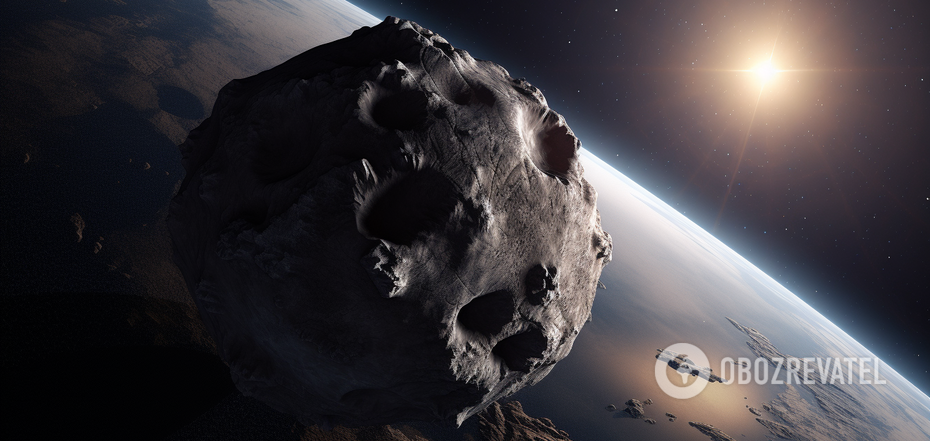News
Scientists solved the mystery of one of the strangest asteroids that hid in the Sun's glow
Asteroid Kamoʻoalewa, which was discovered only in 2016 as it was hiding in the sun's glow, most likely does not come from the asteroid belt like all its "relatives." It has a more "terrestrial" origin. Scientists suggest that this space rock is a piece of the Moon.
According to Weird, this theory was voiced by Renu Malhotra, an astronomer at the University of Arizona (USA). Kamoʻoalewa was hiding from Earth's astronomers in an orbital point that is difficult to observe because it requires looking directly at the Sun. However, seven years ago, it was finally discovered thanks to a telescope atop the Haleakala volcano on the island of Maui (Hawaii).
Translated from Hawaiian, the name of the asteroid means "wobbling celestial object". It is considered a "quasi-satellite" of the Earth because it looks like a permanent, though not very bright, satellite. The asteroid is not under the influence of our planet and orbits the Sun.
Malhotra suspected that Kamoʻoalewa did not come from the asteroid belt early on.
"Based on the properties of its orbit, we realized that it was different from other near-Earth asteroids and could potentially have a different source," the astronomer said.
To find the source, in 2021, scientists tried to measure the light spectrum of the asteroid and found that it was suspiciously similar to the spectrum of silicates found on the Moon. Based on this, they came up with a bold theory: The 50-meter-long space rock was detached from the Moon by a collision with another asteroid (up to 1 kilometer in size) that occurred millions of years ago.
Now their new study has confirmed this guess. It was found that the oscillation of Kamoʻoalewa's orbit is consistent with this theory.
During the study, the scientists modeled possible asteroid collisions with the Moon's surface, which could launch pieces of regolith fast enough to break out of the Earth's orbit. They then modeled the subsequent orbits of these rocks and saw that some of them did end up in an orbit similar to that of Kamoʻoalewa.
The researchers found that such an orbit is rare, but not impossible. Mathematically, the probability of such an orbit is 0.8%. Although it sounds unlikely, the probability that an asteroid from the asteroid belt was gravitationally trapped in such an unstable orbit is zero.
Scientists also assume that Kamoʻoalewa's unstable orbit will eventually face the consequences of the so-called three-body problem. The chaotic gravitational influence of three bodies - the Earth, the Sun, and Kamoʻoalewa - will eventually push the asteroid out and send it away.
Kamoʻoalewa's lunar origin also has implications for the potentially dangerous asteroids approaching Earth that NASA and other organizations are searching the skies for. This means that scientists must also consider orbits originating from the Moon, not just rocks ejected from the asteroid belt.
Earlier, OBOZ.UA reported that a hidden "potentially dangerous 180-meter asteroid" was discovered near the Earth.
Subscribe to OBOZ.UA on Telegram and Viber to keep up with the latest events.



























